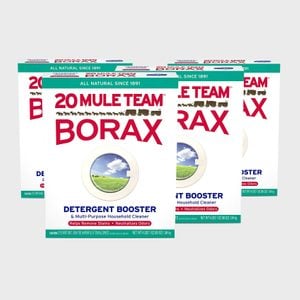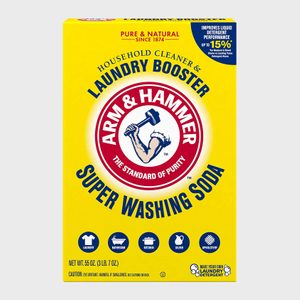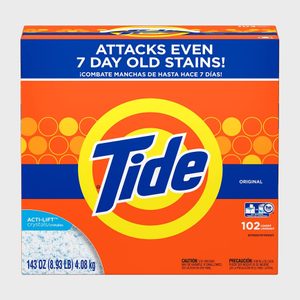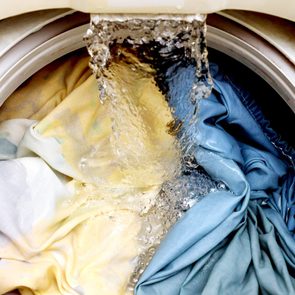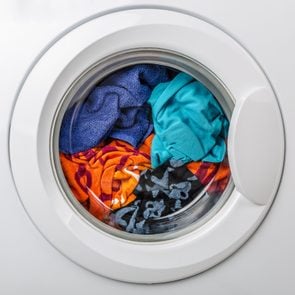What Is Laundry Stripping, and How Is It Done?
Updated: Feb. 01, 2024
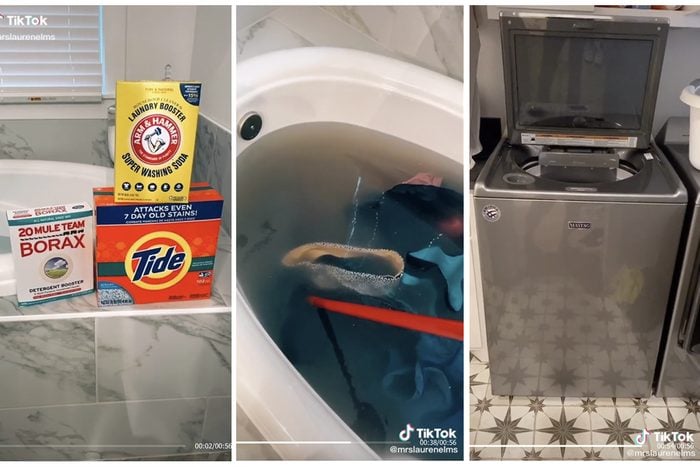
Laundry stripping is a TikTok sensation because it's effective at getting out grime—and also weirdly satisfying. Here's what you need to know.
Just when you thought you had learned everything possible about how to do laundry, including how to wash towels and how often to wash sheets, along comes something called laundry stripping. It basically means taking your “clean” clothes and soaking them in a solution to remove the residue left from laundry detergent and fabric softener. There are dozens of TikTok videos demonstrating the process, all of which reveal a disgusting amount of dirt coming off the clothes and turning the bathtub water brown within minutes.
We asked Patric Richardson, star of HGTV’s The Laundry Guy and author of Laundry Love: Finding Joy in a Common Chore, to give us the scoop about laundry stripping and whether it’s something we need to add to our cleaning schedule.
What is laundry stripping?
“Stripping is basically removing all the buildup off of your laundry,” says Richardson. “It is similar in process to those shampoos that remove buildup from your hair.”
Although the process isn’t difficult, it is time consuming. You have to soak your laundry (which has already been washed and is, in theory, clean) for hours in the tub and then run it through the washer and dryer again.
Is laundry stripping safe?
“Stripping is just amped-up laundry,” explains Richardson, “so it’s safe as long as you’re using safe products on clothes that are meant to be laundered.”
You don’t want to strip items made of delicate fabrics or anything that could fade or shrink. Plus, make sure the laundry you strip is colorfast, so you’re only removing dirt, not dye.
Is laundry stripping necessary?
According to Richardson, laundry stripping is a relatively new thing that came about because people now use more products in their laundry. And he says it’s not necessary if you’re doing laundry correctly, whether you’re hand-washing clothing or putting it in the machine.
“I think a better approach is to use less product—and fewer products—so you don’t get buildup in the first place,” says Richardson. “People used to use harsh products on their hair and then strip it out until they finally realized the stripping wasn’t necessary if they simply switched out the harsh products.”
If you haven’t been treating your items quite right, though, it could be a good option to use occasionally to remove lingering grime, body oils, and product residue.
How often should I strip my laundry?
“You can strip your laundry if it feels stiff or if the fabric doesn’t feel like itself,” says Richardson. “For example, cotton should be soft, [and] athletic wear should be supple and stretchy.”
That being said, laundry stripping should really only be done a couple of times a year at most, since the process involves leaving clothes in a powerful cleaning solution for an extended period of time and can be harsh on fabrics if done too often.
What is needed to strip laundry?
Equipment:
- Bathtub
- Washer and dryer
- Wooden spoon
Products:
- Borax
- Washing soda (sodium carbonate, which is not the same as baking soda)
- Laundry detergent
How to strip laundry
Before you start, give yourself ample time. “Take a day to do it,” suggests Richardson. “It is not a quick process.” When you’re ready, follow these steps with already-laundered items:
- Fill your bathtub with hot water.
- Pour in 1/4 cup borax, 1/4 cup washing soda, and 1/2 cup laundry detergent, stirring with a wooden spoon until fully dissolved.
- Place clean laundry in the water, submerging each item completely and evenly, and let it soak for about four hours, until the water has cooled. Stir with a wooden spoon every hour or so.
- Drain the tub (yes, it’s normal for the water to be brown), and wring out each item.
- Place the laundry in the washing machine without detergent, and run through a full cycle on cold to get a complete rinse.
- Tumble-dry without dryer sheets or dryer balls.
More tips for laundry stripping
- Laundry stripping works best on cotton items like sheets, towels, and T-shirts.
- Separate whites from colors to prevent dye from bleeding on them.
- Avoid having to do stripping at all by following measuring instructions on store-bought detergent and not overdoing it with any other laundry products. Also, wash sheets and towels every week or two, and don’t overload your machine.
Source:
- Patric Richardson, expert at The Laundry Evangelist, star of HGTV’s The Laundry Guy, and author of Laundry Love: Finding Joy in a Common Chore

